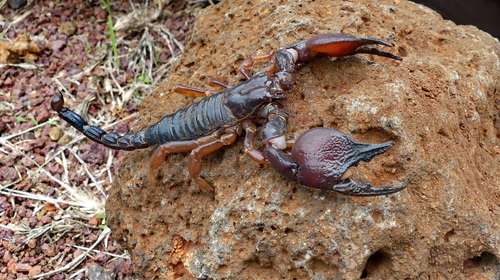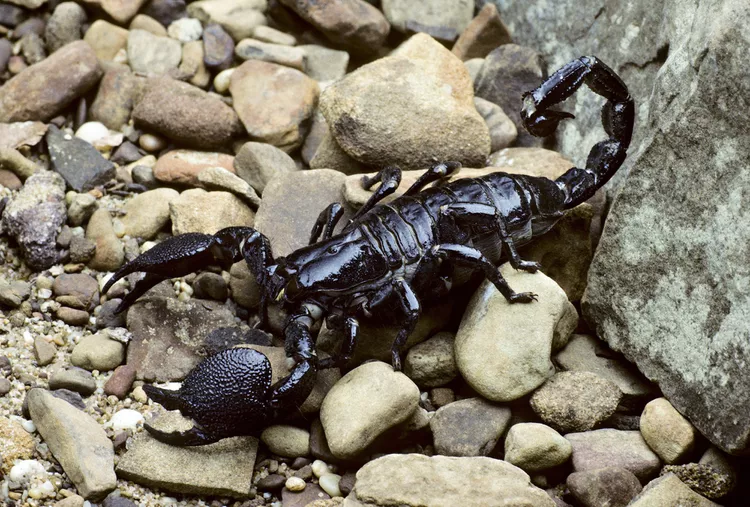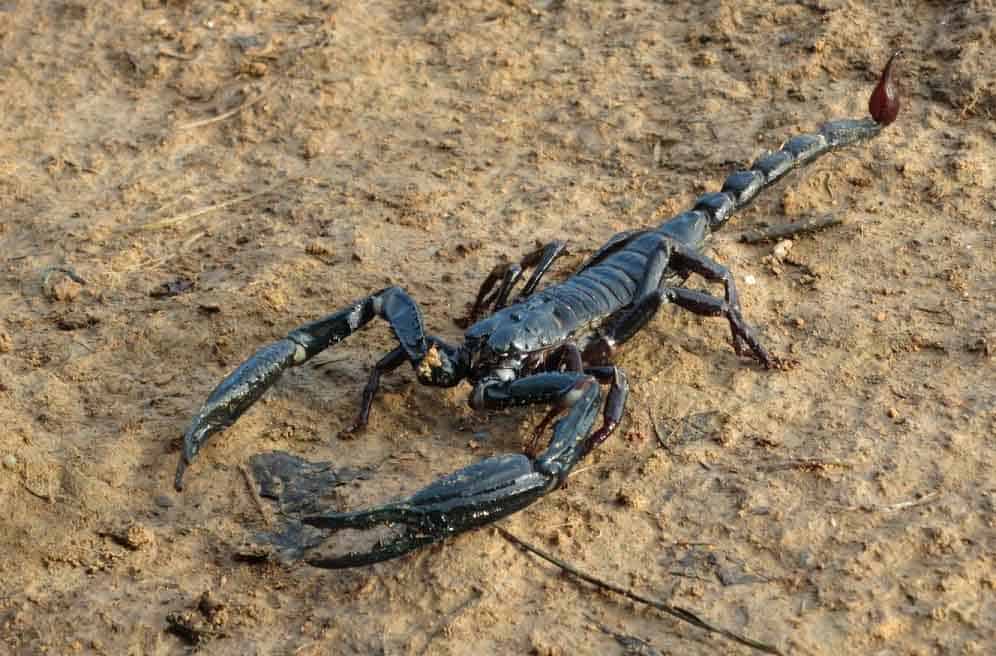
Description
Scientific Name: Pandinus cavimanus
The Tanzanian Red Clawed Scorpion resembles the Emperor Scorpion in appearance and is a typical scorpion. They have a black body, and depending on where they were found, the hue of their claws can range from bright red to just a hint of red. Some may even have a little reddish tint to their backs. Although it stings at the first hint of trouble, its venom is identical to that of a bee. It can survive up to 8 years in captivity and possesses claws that are rusty crimson. It enjoys hunting and is hostile to other scorpions living in the same habitat.
Habitat
They can be seen residing in Tanzania’s humid jungles. They may be discovered dwelling behind rocks, fallen logs, or in small burrows because they like to hide.

Behavior
The Red Clawed Scorpion, however, does not do well in communal living situations and does not get along well with other scorpions, especially other Red Claw scorpions. Since it tends to be more aggressive and prone to sting than the Emperor scorpion, it is not advised for beginners.
As Pet
The Tanzanian Red Clawed Scorpion can be housed in a glass or plastic tank, with the latter being the less expensive option. Check out our starter kits we have available.
Throughout the enclosure, place rocks, logs, and half-turned plant pots with a soil depth of at least 5-7.5cm (2-3 inches) to serve as hides. Provide a temperature of between 24 and 28 C (75 and 82 F), which can go down a little bit at night. A red basking light or a heat mat are two options for heating your cage, both of which should be connected to a thermostat for safety. Heat mats work best when placed against the side of the tank because the deep substrate prevents the heat from rising. To create a temperature gradient, basking lights should be positioned to one side.
By softly spraying with water every other day, you can keep the relative humidity in the area between 75 and 80 percent. If you have children, place cotton wool or little pebbles in a small shallow water dish to protect your scorpion from drowning. Feed on tiny insects like crickets and locusts, as well as other live meals. While adults can be fed every 3–4 days, children should only be fed every 1–2 days.
Table





